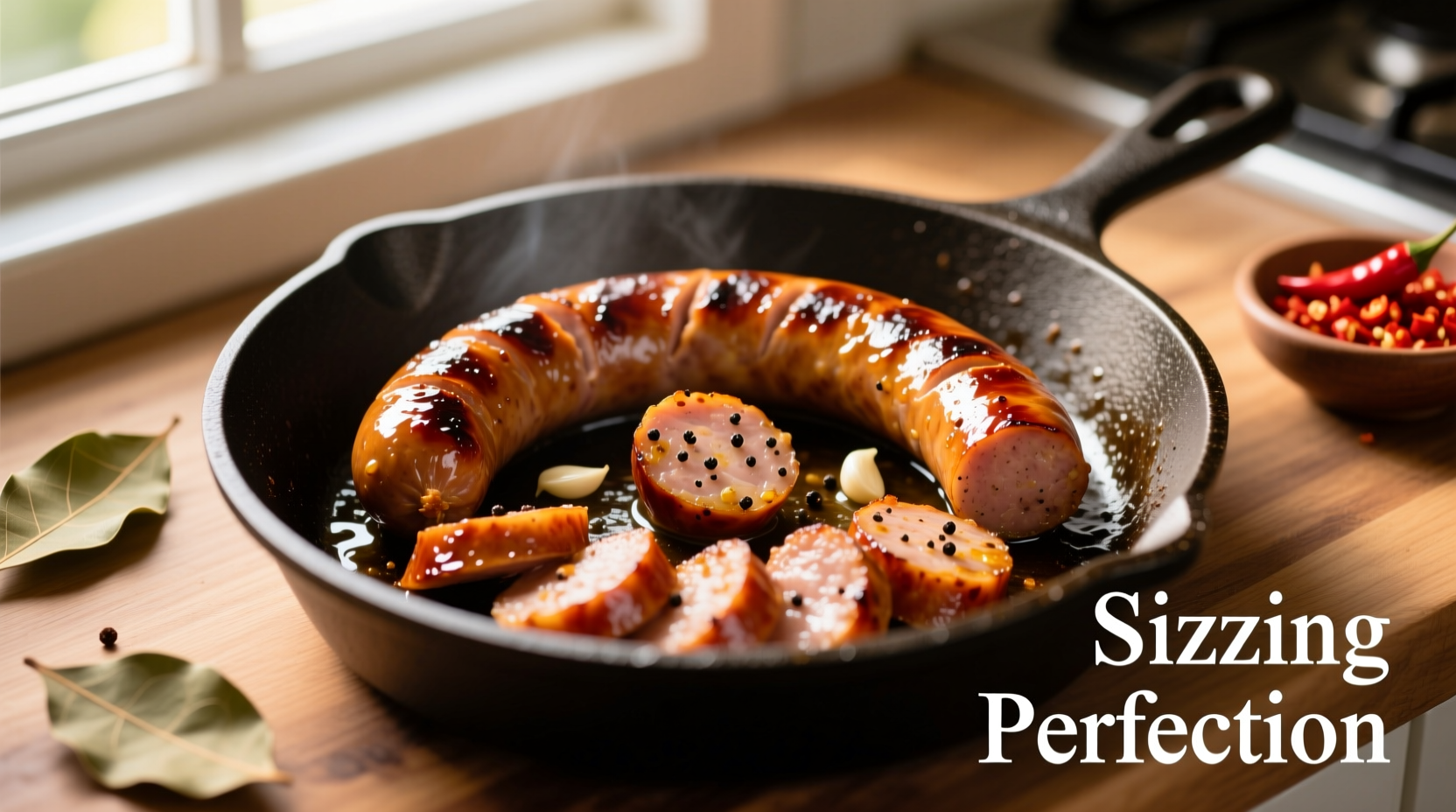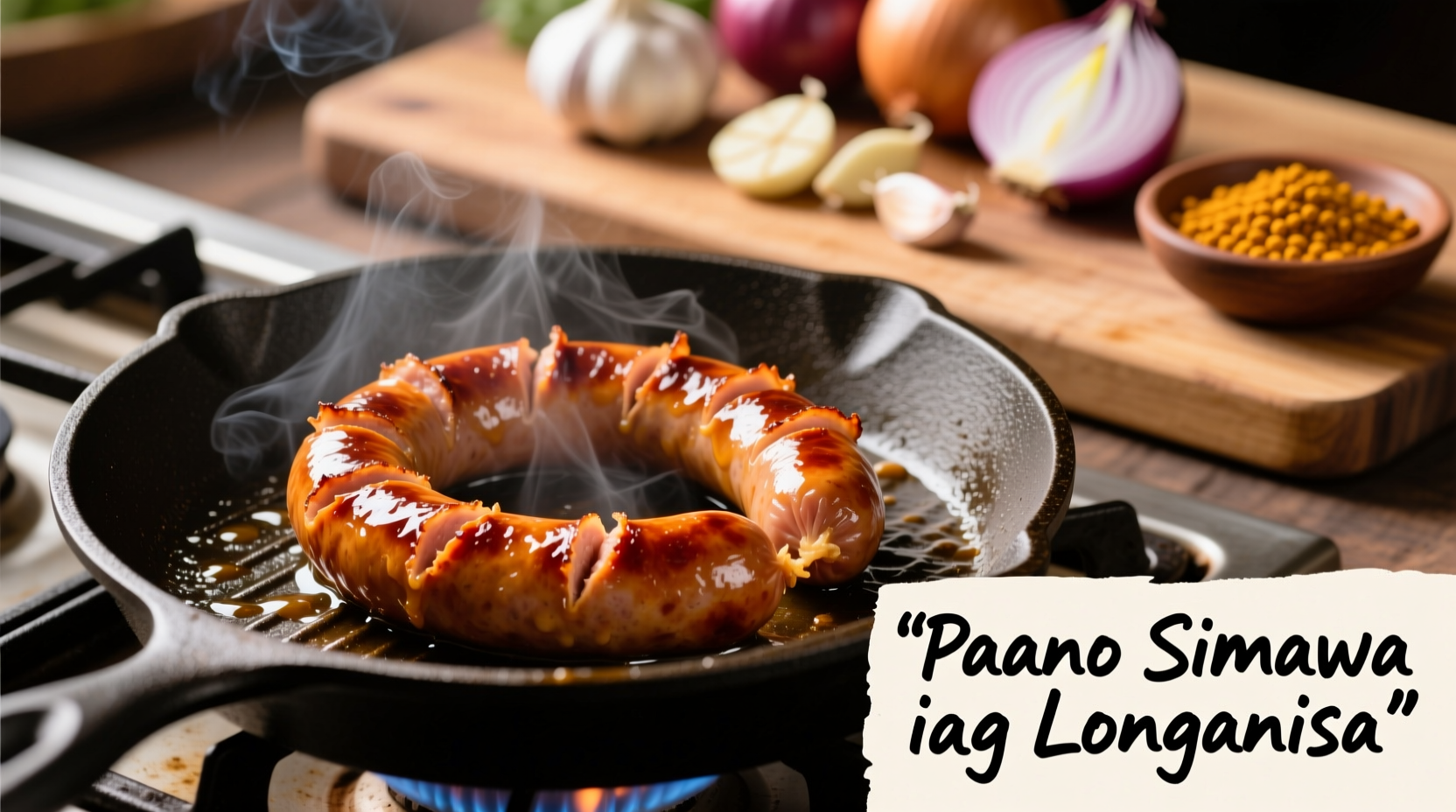Longanisa is a beloved Filipino sausage with countless regional variations across the Philippines. Unlike pre-cooked sausages, most longanisa is sold fresh and requires proper cooking technique to achieve the perfect balance of crispy exterior and juicy interior while managing the significant fat content. This guide provides the authentic method used by Filipino home cooks for generations.
Understanding Longanisa Varieties Before You Start Cooking
Before you begin cooking longanisa, it's crucial to identify which type you have, as preparation varies significantly. The Philippines has over 30 documented regional varieties, each with distinct characteristics that affect cooking time and method.
| Variety | Key Characteristics | Cooking Time | Special Preparation |
|---|---|---|---|
| Lucban (Quezon) | Bright red, garlicky, moderately sweet | 15-18 minutes | Boil 5 minutes first to render fat |
| Vigan (Ilocos) | Deep red, tangy, less sweet | 12-15 minutes | No pre-boiling needed |
| Pampanga | Orange-red, very sweet | 10-12 minutes | Prick casing before cooking |
| Chorizo de Bilbao | Deep red, smoky, moderately sweet | 12-15 minutes | Simmer in water first |
Source: National Museum of the Philippines - Culinary Heritage Collection
Essential Tools for Perfect Longanisa
Having the right equipment makes a significant difference in your longanisa cooking results:
- Heavy-bottomed skillet - Cast iron or carbon steel works best for even heat distribution
- Splatter screen - Essential for managing grease while allowing steam to escape
- Thin metal spatula - For gentle turning without piercing the casing
- Paper towels - For draining excess grease after cooking
Step-by-Step Longanisa Cooking Guide
Pre-Cooking Preparation (2-3 minutes)
Proper preparation prevents common issues like bursting casings and uneven cooking:
- Examine your longanisa links - if they're connected in a chain, separate them carefully
- For most varieties (except Vigan style), prick each sausage 2-3 times with a toothpick to allow fat to escape
- If using Lucban or sweet varieties, place sausages in a pan with ½ cup water and simmer for 5 minutes before proceeding
- Dry the sausages thoroughly with paper towels before pan-frying for optimal browning
The Perfect Pan-Frying Technique (12-18 minutes)
This is the critical phase where most home cooks make mistakes that affect texture and flavor:
- Place longanisa in a cold, dry skillet - no oil needed as the sausages will render their own fat
- Turn heat to medium-low (3-4 on most stoves) - high heat causes casing to burst
- Cook for 3-4 minutes until fat begins to render and sausages start to sizzle
- Turn sausages every 2-3 minutes using tongs for even cooking
- As fat accumulates, carefully pour off excess (reserve for frying garlic rice!)
- Continue cooking until sausages reach deep golden brown color (12-18 minutes total)
- Internal temperature should reach 160°F (71°C) for food safety

Achieving Restaurant-Quality Results
Professional Filipino cooks use these techniques to elevate their longanisa:
- The water method: For Lucban-style, add ¼ cup water to the pan after 5 minutes of cooking, cover, and steam for 3 minutes before finishing dry
- Garlic infusion: Add 2-3 whole garlic cloves to the pan while cooking for subtle flavor enhancement
- Final sear: Increase heat to medium-high for the last 60 seconds to achieve perfect caramelization
- Resting: Let cooked longanisa rest for 3 minutes before serving to redistribute juices
Longanisa Cooking Timeline: From Spanish Origins to Modern Filipino Staple
Understanding the historical context helps appreciate why proper cooking technique matters for this beloved Filipino staple:
- 1565: Spanish colonizers introduce chorizo to the Philippines during the Galleon Trade
- 1600s-1800s: Filipino cooks adapt the recipe using local ingredients like native garlic, vinegar, and indigenous sweeteners
- Early 1900s: Regional variations emerge as communities develop distinct styles based on local preferences
- 1940s-1960s: Longanisa becomes a breakfast staple during the American colonial period
- Present day: Over 30 documented regional varieties exist across the Philippine archipelago
Source: National Commission for Culture and the Arts - Philippine Culture Profile
Avoiding Common Longanisa Cooking Mistakes
These frequent errors can ruin your longanisa experience:
- Using high heat: Causes casing to burst and uneven cooking - always use medium-low heat
- Not managing grease: Excess fat creates soggy texture - pour off accumulated grease periodically
- Overcrowding the pan: Prevents proper browning - cook in batches if necessary
- Piercing with fork: Releases juices - use tongs for turning
- Serving immediately: Resting allows juices to redistribute for maximum flavor
Serving Suggestions and Pairings
Authentic longanisa is traditionally served as part of a Filipino breakfast ("almusal"):
- Sinangag (garlic fried rice): Use the rendered longanisa fat for authentic flavor
- Sunny-side up eggs: Runny yolks complement the savory sausage
- Sukang iloko (cane vinegar): Served on the side for dipping
- Sliced tomatoes: Fresh tomatoes cut the richness of the sausage
Storage and Reheating Guidelines
Proper storage maintains quality and food safety:
- Fresh longanisa: Store in refrigerator for up to 3 days or freeze for 3 months
- Cooked longanisa: Refrigerate for up to 4 days in airtight container
- Best reheating method: Pan-fry in small amount of oil over medium heat for 3-4 minutes
- Avoid microwave: Creates uneven texture and rubbery casing











 浙公网安备
33010002000092号
浙公网安备
33010002000092号 浙B2-20120091-4
浙B2-20120091-4